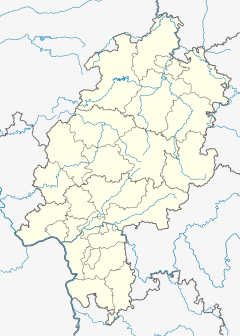Schloss_Wilhelmshöhe
Schloss Wilhelmshöhe
Palace in Kassel, Germany
Schloss Wilhelmshöhe is a Neoclassical palace located in Bad Wilhelmshöhe, a part of Kassel, Germany. It was built for Landgrave Wilhelm (William) IX of Hesse in the late 18th century. Emperor Wilhelm II made extensive use of it as a summer residence and personal retreat.
This article needs additional citations for verification. (October 2021) |
Today, the palace houses the art gallery Gemäldegalerie Alte Meister, part of Museumslandschaft Hessen Kassel. Since 2013, Schloss Wilhelmshöhe has been part of the UNESCO World Heritage Site Bergpark Wilhelmshöhe because of its contribution to Baroque architecture and the outstanding water features that surround the palace.[1]


